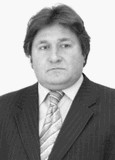Metabolic features of qualified academic woman rowing in the boat and on the rowing machines
Keywords:
academic rowing, rowing pace, metabolic support of the load, physiological stress.Abstract
Objective of the study was to identify the features of metabolic support for rowing by qualified academic women in a boat and on rowing ergometers, taking into account the pace of exercises.
Methods and structure of the study. The indicators reflecting the metabolic characteristics of qualified female academics were studied when rowing at different rates (22-24 strokes/min; 26-28 strokes/min; 30-32 strokes/min), in a boat and on the Concept-2 and RP3 rowing machines. Four female academicians qualified as candidate master of sports and master of sports took part in the study. Age – 19.5±2.4 years; body length – 179.5±6.8 cm; body weight – 75.3±12.7 kg.
Results and conclusions. It was revealed that when rowing qualified female academics at a rate of 22-24 strokes/min in a boat and on Concept-2 and RP3 ergometers, the criteria for metabolic support of work did not have significant differences. At this pace, the load can be classified as a zone of moderate physiological power. When rowing at a rate of 24-26 strokes/min on rowing ergometers among qualified academicians, the metabolic support criteria for work were significantly higher than when rowing in a boat. Rowing on ergometers at this pace can be classified as a load of high physiological power, and rowing in a boat can be classified as a load of moderate power.
When rowing at a rate of 30-32 strokes/min on rowing ergometers, the level of biological stress (internal load) among female academics was significantly higher than when rowing in a boat, and the load should be attributed to the zone of submaximal physiological load. In this case, rowing in a boat can be classified as a zone of high physiological power. Rowing on the Concept-2 and RP3 ergometers for academic women is a more intense exercise compared to rowing in a boat. Performing intense exercises on rowing ergometers involves a significant increase in energy expenditure and, accordingly, recovery time in female athletes.
References
Voronov A.V., Kvashuk P.V., Semaeva G.N., Voronova A.A., Malkin R.V. Analiz biomekhanicheskikh osobennostey realizatsii skorostno-silovogo potentsiala myshts grebtsov-akademistov pri greble v lodke i na grebnykh ergometrakh raznoy konstruktsii. Fiziologicheskiye i biokhimicheskiye osnovy i pedagogicheskiye tekhnologii adaptatsii k raznym po velichine fizicheskim nagruzkam. Proceedings national scientific-practical conference with international participation, dedicated to the memory of Dr. Biol., Professor A.S. Chinkina. Kazan, November 18, 2022. FSBEI HE "Povolzhsky GUFKSiT". Kazan, 2022. pp. 80-85.
Kleshnev V.V. (2018) Ispolzovaniye BioRowTech na Concept-2 i RP3 [Using BioRowTech on Concept-2 and RP3]. Novosti biomekhaniki grebli. No. 203. Available at: http://www.biorow.com.
Benson A., Abendroth J., King D., Swensen T. (2011) Comparison of rowing on a concept 2 stationary and dynamic ergometer. J Sports Sci Med 10:267-273.
Kerhervé H.A., Chatel B., Reboah S. et al (2018) Comparison of prolonged rowing on fixed and free-floating ergometers in competitive rowers. Int J Sports Med 39:840-845.
Kleshnev V. The effects of stroke rate on biomechanical parameters and efficiency of rowing. In: Abranles JMCS, editor. Proceedings of XIV symposium on biomechanics in sports Lisboa: Edicoes FMH; 1996. p. 321-4.
Martin T.P. Bemfield J.S. Effect of stroke rate on velocity of a rowing shell Medicine and Science in Sports and Exercise 1980:12:250-6.
McBride M.E. The role of Individual and crew technique in the optimization of boat velocity in rowing. Perth: University of Western Australia, Department of Human Movement; 1998. p. 180.


